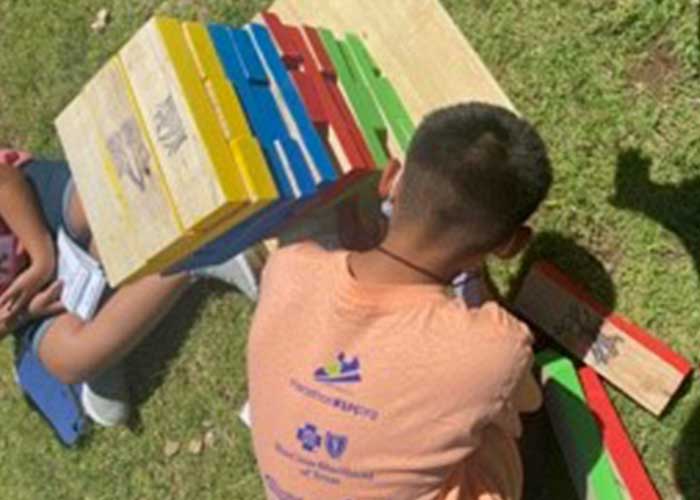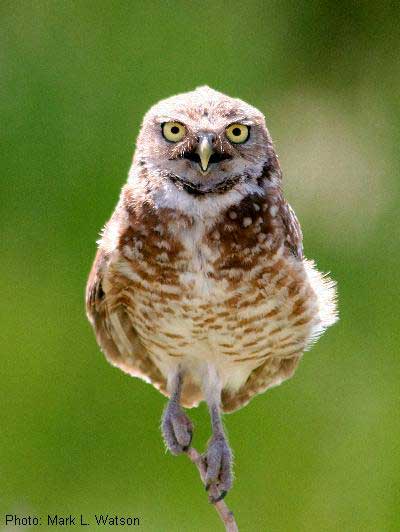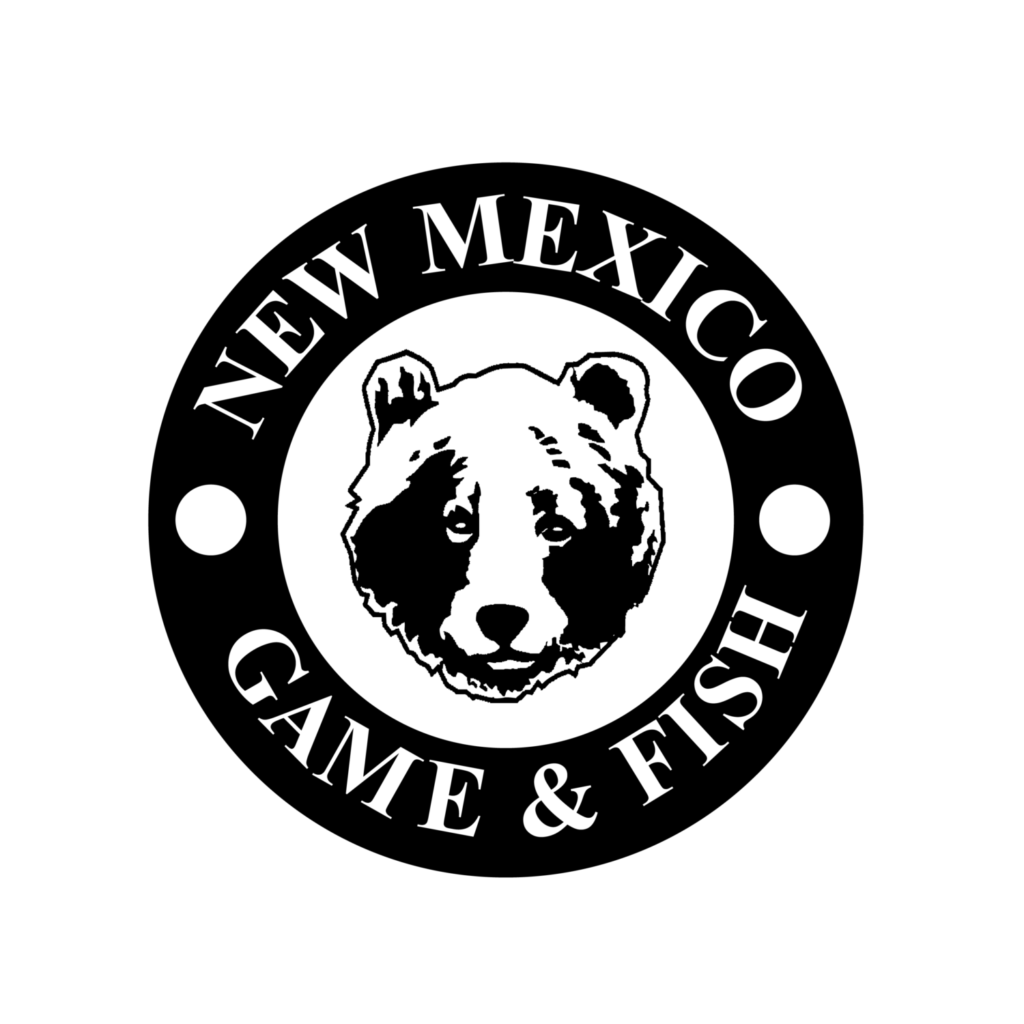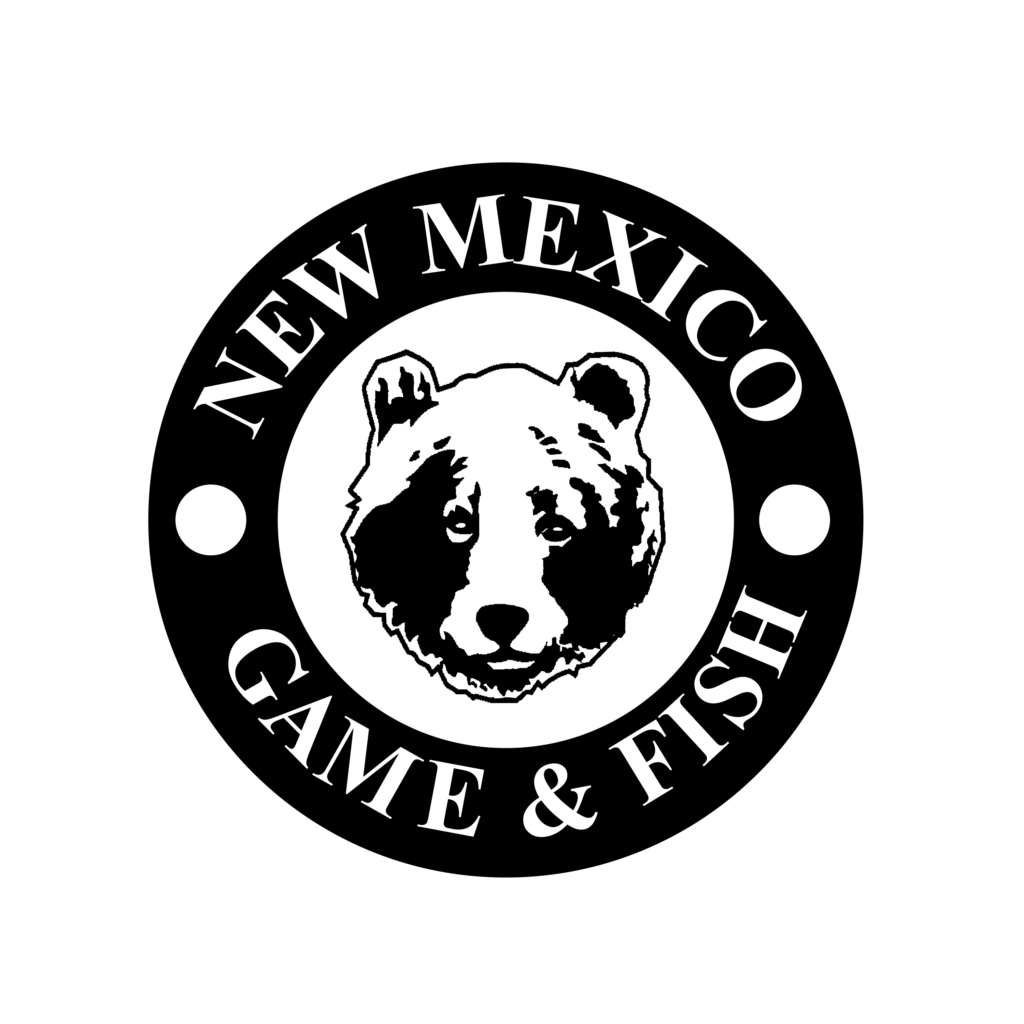Following is a selected project highlight from the Share with Wildlife mission to assist all New Mexico wildlife in need, no matter what species.
Learning About Species Needs and Interactions in the Chihuahuan Desert

Students participate in block tower activity. (Ryan Pemberton)
What kinds of resources do burrowing owls and prairie dogs need to survive in the Chihuahuan Desert? What sort of materials can be used to construct artificial burrows for burrowing owls? What sort of impacts do natural and human-caused environmental changes have on the strength and stability of an ecosystem? What sort of restoration actions could be taken to improve local habitat for the black-tailed prairie dog? These are all questions that the Asombro Institute for Science Education in Las Cruces is working with students in southern New Mexico to answer. They are also bringing back fun childhood games like “telephone” to keep things fun! Asombro, using funds from the Share with Wildlife program, has developed a new series of lessons that Asombro staff members lead during field trips by K-1st and 4th-5th graders to Asombro’s science partner’s facility; the USDA-ARS Jornada Experimental Range. Asombro has also developed a dataset for their annual “Desert Data Jam” with middle school students that is focused on Species of Greatest Conservation Need (SGCN) in the six ecoregions in New Mexico.
Due to COVID-19 restrictions, field trips could not be implemented with students during the 2020-2021 school year. However, Asombro extended the potential future reach of these new field trips to develop a virtual field trip program for K-1st grade students. They also converted the “Desert Data Jam” to an online event in which approximately 900 6th through 8th grade students participated. The new wildlife conservation datset was one of five available for students to analyze and creatively represent (e.g., create a song, poem, model, game, or video) and was one of the most popular among students.
The field trip lessons start students off searching for items humans need to live in a habitat (K-1st grade) or creating a food web for the Chihuahuan Desert and writing a poem (4th and 5th grade). The younger students dive deeper into habitat needs by using a block tower (remember Jenga!) to model the needs of four animals in the Chihuahuan Desert; imitating prairie dog communication about predators in clipped and unclipped grasslands; and learning about materials for buildling artificial burrows for burrowing owls. Older students use a block tower to model interactions between living and non-living components of ecosystems; evaluate local habitat suitability for black-tailed prairie dogs; and brainstorm actions for a local habitat restoration project after analyzing their habitat suitability data.
These creative, field-based activities will be available to students for many years to come and the virtual lessons can engage students outside of the Las Cruces area regarding wildlife in the Chihuahuan Desert.

Burrowing owl. (Mark Watson)


